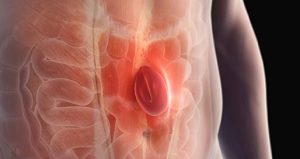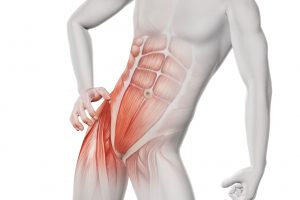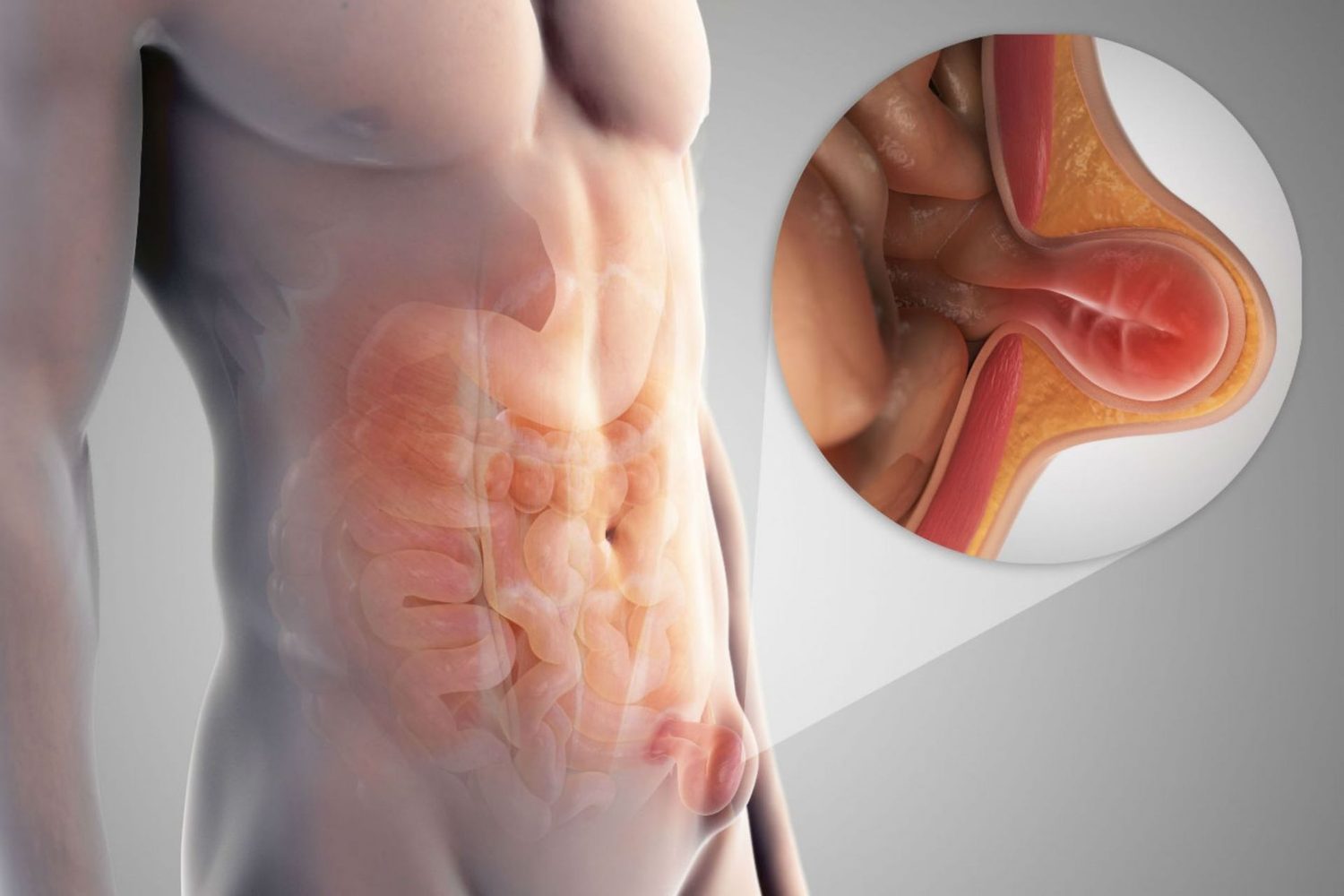An inguinal hernia is a condition in which the organs of the abdominal cavity (intestines, greater omentum, ovaries) extend beyond the anterior abdominal wall through the inguinal canal.
An inguinal hernia is manifested by a tumor-like protrusion in the groin area and pain of varying intensity (especially with physical exertion).
An inguinal hernia is treated by a surgeon. It is advisable to see a doctor at the first sign of discomfort.
See also: Hernia: questions, answers, solutions
Inguinal hernia symptoms
feeling of heaviness in the abdomen;
the appearance in the groin area of a variable in size swelling that disappears in the supine position;
the occurrence of pain in the hernia after lifting weights or straining;
feeling uncomfortable when walking.
Inguinal hernia diagnosis methods:
examination by a surgeon;
irrigoscopy;
herniography is an X-ray method, which consists in the introduction of a special contrast agent into the abdominal cavity for the purpose of examining a hernia;
Ultrasound of the scrotum and inguinal canals.
Diseases with similar symptoms:
hydrocele;
varicocele;
lymphadenitis;
femoral hernia.
The course of the disease
Inguinal hernia symptoms may come on suddenly or gradually.
Small inguinal hernias may not cause any discomfort or pain. With the prolonged existence of a hernia, its large size, as well as with sliding and recurrent forms, pain in the lower abdomen or groin is constantly disturbed. Sometimes it gives to the lower back and sacrum. Constipation is possible. The larger the hernial protrusion, the more significant inconvenience it causes when walking and physical work, sharply limiting the ability to work. With a sliding hernia of the bladder, increased urination, cramps in the urethra, pain above the pubis that disappear after the hernia is repositioned. In elderly patients, urinary retention is often observed.
There are the following types of inguinal hernias:
1) Oblique hernia – internal organs exit through the spermatic cord (vas deferens, blood and lymphatic vessels, surrounded by a single membrane), located inside it. An oblique hernia is congenital and acquired.
2) Direct hernia – internal organs go into the inguinal canal outside the spermatic cord. It is only acquired. The cause of the appearance of an inguinal hernia is muscle and ligament weakness.
3) Combined inguinal hernia is characterized by the fact that the patient has two or three separate hernial sacs on one side that do not communicate with each other and represent straight and oblique hernias. Or a combination of them.
Complications of an inguinal hernia
infringement of an inguinal hernia – sudden compression of the hernial contents in the hernial orifice;
ischemic orchitis – testicular inflammation;
coprostasis – stagnation of feces in the large intestine;
inflammation of the hernia.
Emergency care is required when an inguinal hernia is pinched and the following symptoms appear:
nausea, vomiting;
blood in the stool, lack of bowel movements and gas discharge;
rapidly growing pain in the groin or scrotum;
the hernia does not correct when pressed lightly in the supine position.
Forecast
An inguinal hernia can be successfully treated with surgery. In the absence of treatment, the formation of an irreducible hernia is possible.
Inguinal hernia causes
Inguinal hernias are most common in men. This is due to the fact that their inguinal canal is less strengthened by muscles and tendon layers, shorter and wider than in women.
Under the influence of increased intra-abdominal pressure, a defect (hernial orifice) is formed in the inguinal canal, into which the hernia enters. Weakness of the muscles and ligaments in the abdomen, as well as the following risk factors, can contribute to this:
a chronic cough, such as a smoker’s cough;
overweight;
constipation;
pregnancy;
frequent lifting of weights;
frequent sneezing, for example due to allergies.
Inguinal hernia prevention
wearing a bandage during pregnancy;
proper nutrition;
training the abdominal muscles;
quitting smoking, leading to coughing.
Inguinal hernia treatment
It is possible to get rid of an inguinal hernia only by surgery in a hospital setting.
Inguinal hernia surgery (hernioplasty):
Endoscopic hernioplasty – special instruments are inserted through small punctures into the abdominal cavity, the hernial sac is cut off and a mesh is sutured to strengthen the abdominal wall.
Postoperative period:
minor pain syndrome;
hospital stay for 2-3 days;
relapses are rare (1-4%).
Lichtenstein’s operation – through a skin incision (10-12 cm), a hernial sac is isolated, inserted into the abdominal cavity and a mesh is sutured to strengthen the hernial orifice.
Postoperative period:
minimal pain syndrome;
hospital stay for 1 day;
relapses are extremely rare (up to 1%).
Obstructive hernioplasty https://en.wikipedia.org/wiki/Hernia_repair – through a skin incision (3-4 cm), a hernial sac is isolated, inserted into the abdominal cavity and an obstructive mesh is sutured into the inguinal canal, which completely prevents the possibility of subsequent hernia formation.
Postoperative period:
almost complete absence of pain:
you can leave the hospital a few hours after the operation;
relapse is unlikely (0.1%).
